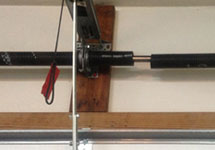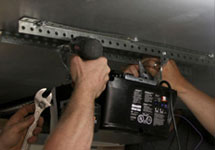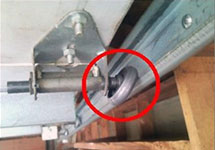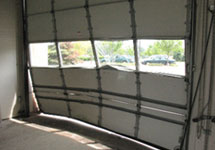One of the main components of a garage door that can wear out over time are the garage door springs. We want to help homeowners identify when their garage door springs need attention and what they should do if their garage door stops functioning from spring failure.
Here are a few key points to keep in mind about your garage door springs:
Number of cycles
Experts agree that the average garage door spring will last about 10,000 cycles — one cycle equals to your garage door being opened and then closed. For example, opening and closing the garage door when going to work in the morning, and then coming back home equals two cycles. An active family could easily have their garage door accumulate over ten thousand cycles in just a few years.
Rust
Another factor that can contribute to your garage door springs wearing out is rust. Rust not only increases the friction placed on the coil when it moves, the corrosive nature of rust also weakens the coil over time. Spraying the springs with spring lubricant available from TDC. We can ship to you or you can purchase the lubricant at one of our offices. Call ahead because this is a VERY popular item.
“Whether it is from regular use or rust, when your garage door springs do wear out, it is not an easy fix,” says TDC President Mark Stuenkel. “We highly recommend homeowners call a garage door specialist for this type of repair.”
Garage door balance
Other than spraying your springs down with a lubricant a few times a year, homeowners should also check the garage door balance at least once a season. To check the balance, simply lift the garage door up halfway, and then (carefully) let it go. Springs in good working order should keep it completely still; if the door sags and falls a bit, the springs are showing signs of wear.
When your springs fail
All garage door springs will fail eventually; they are especially prone to failure during the winter months when extreme temperatures causes the metal to expand and contract. Proper maintenance will not only help prolong the lifespan of the springs, but also alert you when they are approaching their failure point.
If at some point a spring breaks, the garage door then becomes too heavy for the opener to lift. To check if your spring has broken, look up at the wall above your door to find your springs. They should be attached to a torsion bar that runs the width of your garage door. If a spring is broken there will be a visible gap between the coils somewhere along the spring.
Contact The Door Company
“Generally speaking, garage doors are complicated, heavy, and are not a simple DIY fix. For adjustments and repairs, I always recommend contacting a professional service company like TDC,” said Stuenkel. “We can service any residential or commercial garage door or gate system within the state of California and Oregon. Our experienced IDEA certified garage door technicians will get your equipment back up and running in no time.”



